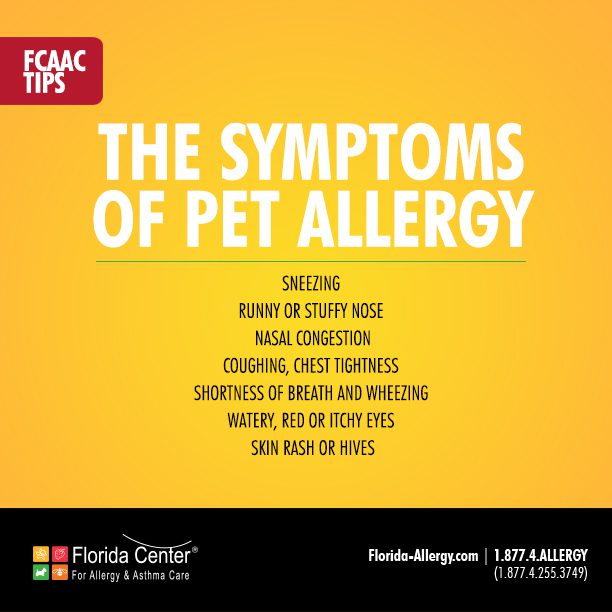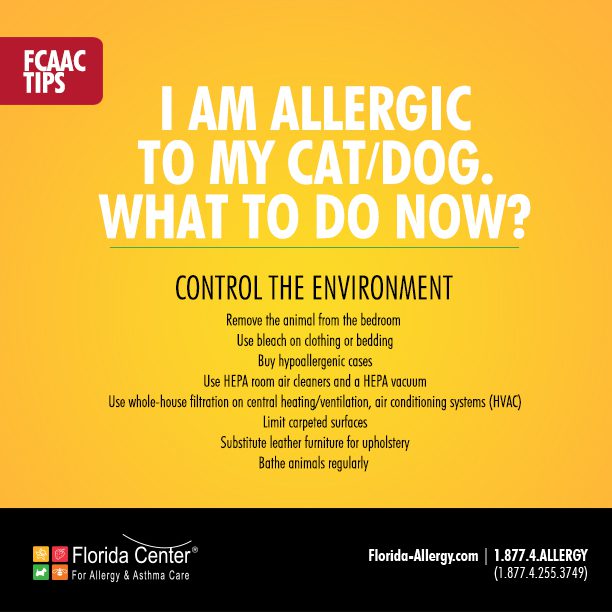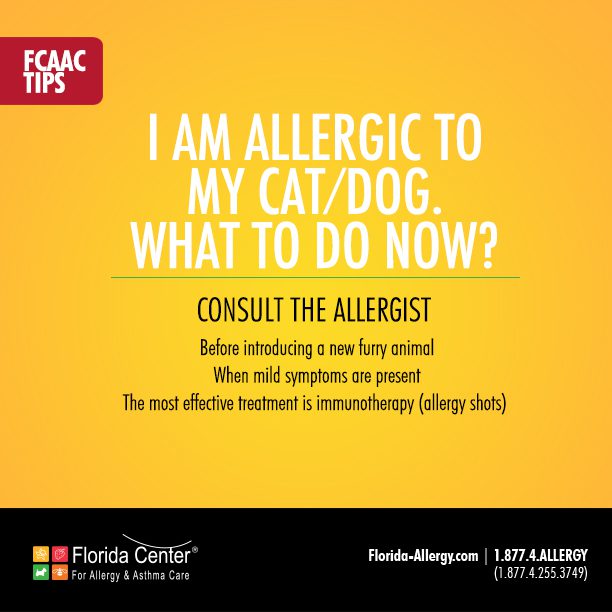The frequently asked questions of patients diagnosed with a pet allergy, because, if you have allergies to pets, you don’t need to put your companions up for adoption.
“Until one has loved an animal, a part of one’s soul remains unawaken” a quote from French poet Anatole France.
Let’s be honest, here at FCAAC we love our pets as much as our children, and we own a most variegated array of them – the list includes commonly, dogs and cats, and it goes all the way to birds and also a baby piglet.
In South Florida we are blessed with warm and sunny weather that doesn’t allow high rates of air pollution, but we are not exonerated from airborne allergens such as pollen, dust, mold, dust mites and also pet dander.
Because June is pet adoption month and because we will never get tired of saying one more time that if you have allergies to pets you don’t have to put your companions up for adoption, we have rounded up the top questions patients ask our doctors when diagnosed with a pet allergy in a series of downloadable images for you to share.
THE SYMPTOMS OF PET ALLERGY
- Sneezing
- Runny or stuffy nose
- Nasal congestion)
- Coughing, chest tightness, shortness of breath and wheezing
- Watery, red or itchy eyes
- Skin rash or hives
I HAVE PET ALLERGIES, BUT WHAT AM I REALLY ALLERGIC TO?
The protein contained in the saliva, dander and urine of your four-legged friend is what you are allergic to.
I am allergic to my cat/dog. What to do now?
A) CONTROL THE ENVIRONMENT
- Remove the animal from the bedroom
- Use bleach on clothing or bedding
- Cover mattress and pillows with hypoallergenic cases
- Use HEPA room air cleaners and a HEPA vacuum
- Use whole-house filtration on central heating/ventilation, air conditioning systems (HVAC); a MERV 12 filter is recommended
- Limit carpeted surfaces
- Substitute upholstery furniture for leather
- Bathe animals regularly
PLEASE NOTE: if symptoms are severe and evolve in asthma attacks and hospitalization, stricter measures must be taken prioritizing the health of the patient.
B) CONSULT THE ALLERGIST
- Before introducing a new furry animal, get tested by an allergist the specialist expert in testing and diagnosing allergies and asthma
- When mild symptoms are present: anti-histamines and nasal sprays
- The most effective treatment is immunotherapy (allergy shots) that helps the body desensitize over a period of time.
CURIOSITY FACTS
- The fur length of the pet doesn’t interfere with the allergic potential of the animal, however the longer the fur the more it can collect other airborne allergens such as pollen or dust.
- It is now known, but not scientifically proven, that in general cats are more allergenic than dogs and that
- non-neutered male cats and dogs are more allergenic.
- At the beginning of the school year there’s a spike in asthma episodes, because children allergic to cats are reintroduced to the allergen that may not be present at home, but brought by their schoolmates.
- There is not such a hypoallergenic cat/dog. All breeds are capable of producing a certain quantity of allergen per week, enough for your body to react.
Resources:
1. http://acaai.org/resources/connect/ask-allergist/hypo-allergenic-or-non-allergenic-dogs-or-cats
2. http://acaai.org/news/love-your-pet-not-your-allergy
3. http://acaai.org/allergies/types/pet-allergy










